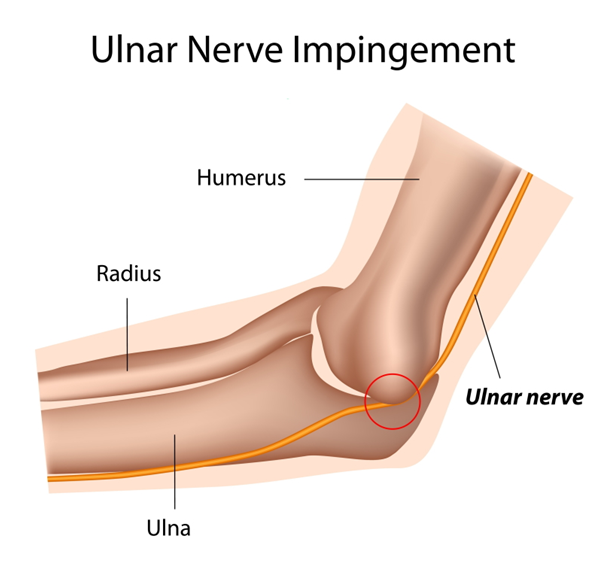| Category | Nerve Blocks |

Cubital tunnel syndrome, also called ulnar nerve entrapment, happens when your ulnar nerve gets irritated or compressed (squeezed) at the inside of your elbow.
You may have cubital tunnel syndrome if your ulnar nerve is compressed or irritated at the elbow.
Your ulnar goes through a tunnel of tissues called the cubital tunnel, which travels under a bony bump on the inside of your elbow called the medial epicondyle. The space is narrow, and there's only a little tissue protecting it. That spot is where your ulnar nerve is most vulnerable. After the medial epicondyle, the ulnar nerve continues under the muscles on the inside of your forearm and into your hand — on the side that has your little finger (pinky). When it enters your hand, it goes through another tunnel called Guyon's canal.
Because of your ulnar nerve, you can control some of the bigger muscles in your forearm (the ones that help you grip objects), feel your little finger, feel half of your ring finger and control many of the muscles in your hand. Those muscles in your hand help you perform fine movements such as typing on a keyboard and playing a musical instrument.
Some factors that put you at risk for cubital tunnel syndrome include:
Inner elbow pain and numbness and tingling in your hand are the most common symptoms. This happens most often when your elbow is bent.
Your healthcare provider will likely start the diagnosis process by asking questions about your symptoms.

The doctor will clean the area over the region of interest and insert a small needle into the target area under imaging guidance. When it is in the correct position, they will inject the drug. They will remove the needle and cover the injection site with a small dressing.
We have very fast and competent working team (Consultant, fellow, clinical assistant, technician and ward assistant) which provide you the comfortable atmosphere and ease your nerves. Usual time of stay is few hours
Every procedure carries a risk, although this is extremely small. The risk of infection with this procedure is extremely small as no incisions are made in the skin.
You can resume your work after 1 day if existing disease allows.